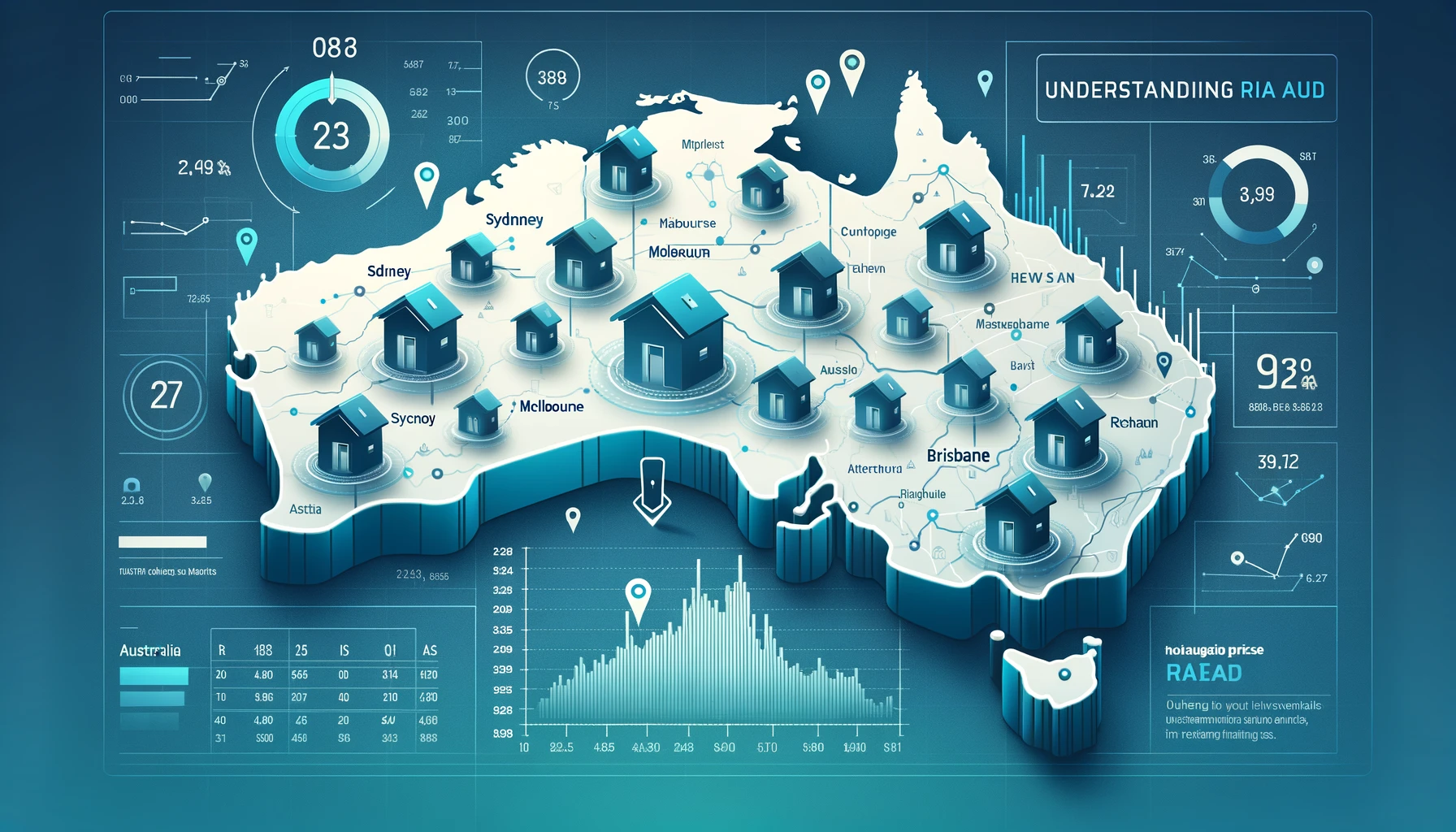Renting out your house in Australia can be a rewarding decision, offering financial benefits and the opportunity to capitalise on the robust Australian rental market. Whether you're a homeowner looking to move elsewhere without selling your property, or an investor aiming to expand your portfolio, understanding the ins and outs of being a landlord is crucial. This guide aims to walk you through the process, ensuring you're well-prepared to navigate the challenges and reap the rewards of the rental market.
Understanding the Rental Market in Australia

- Market Trends: The rental market in Australia varies significantly from city to city. Metropolitan areas like Sydney and Melbourne often see higher rent due to demand, whereas rural areas might not command the same price. Staying updated with market trends is crucial for setting competitive yet profitable rental prices.
- Tenant Preferences: Modern tenants often look for properties with sustainable features and technological integrations. High-speed internet, energy-efficient appliances, and spaces for home offices are increasingly popular.
How to Be a Good Landlord in Australia
Being a good landlord goes beyond just collecting rent; it involves managing properties and relationships effectively. Here’s how you can excel:
- Positive Relationships: Maintain open lines of communication with your tenants. Address their concerns promptly and respectfully.
- Legal Responsibilities: Familiarize yourself with landlord-tenant laws in your state. These include security deposit limits, proper eviction notices, and maintenance obligations.
- Conflict Resolution: Handle disputes calmly and legally, keeping detailed records of all communications.
Financial Planning for Rental Success
- Budgeting for Expenses: Accurately budget for both predictable and unpredictable expenses. This includes maintenance, repairs, property taxes, and insurance. Setting aside a contingency fund (typically 10% of your rental income) can help manage unforeseen costs without financial strain.
- Rental Yield Calculation: Determine the rental yield of your property by calculating the annual rental income, subtracting expenses, and then dividing by the property value. This metric helps assess the profitability of your rental and can guide pricing decisions.
- Return on Investment (ROI): Keep track of improvements and their impact on property value and rental price. Investments in the property should ideally lead to a higher ROI, either through increased property value or higher rental income.
Tips Renting Out Your House in Australia

Enhance Property Aesthetics
Interior Updates: Refresh the interior with a new coat of paint in neutral colors to appeal to a wider range of tenants. Consider updating light fixtures and hardware for a modern touch.
Flooring Solutions: Replace worn carpets or add attractive and durable flooring solutions like hardwood or laminate, which are easier to clean and maintain.
- Curb Appeal: First impressions matter. Enhance the exterior with well-kept landscaping, a clean driveway, and a welcoming entrance. Simple additions like potted plants or a new mailbox can significantly boost curb appeal.
Equip with Essential Appliances
Kitchen Upgrades: Providing essential kitchen appliances such as a dishwasher, microwave, and modern stove can significantly increase the rental's attractiveness. Stainless steel appliances are highly sought after for their durability and sleek appearance.
Laundry Facilities: Including a washer and dryer can be a major draw for potential tenants, adding considerable convenience and appeal to your property.
Maintenance and Warranties: Ensure all appliances are in good working order and keep records of their warranties. Clearly outline maintenance responsibilities in the lease agreement to avoid future disputes.
Create a Relaxing Retreat
Outdoor Spaces: If your property includes outdoor space, make it a relaxing retreat. A well-maintained deck, patio, or garden can be a significant selling point. Consider adding outdoor seating or dining sets to enhance the livability of these areas.
Privacy Measures: Invest in quality fencing and strategic landscaping to increase privacy. Privacy is a key factor for many renters, especially in densely populated areas.
Lighting and Security: Install sufficient outdoor lighting to create a safe and inviting environment. Consider motion sensor lights for added security and convenience.
Setting the Right Rental Price

Setting a competitive rental price is pivotal:
- Market Research: Analyze similar properties in your area to set a baseline. Adjust based on unique features or additional amenities your property offers.
- Pricing Tools: Use online tools and real estate databases to compare pricing strategies effectively.
Understand and Fulfill Legal Obligations
Stay Informed: Regularly update yourself on landlord-tenant laws in your state or territory. Laws can change, and staying informed helps you avoid legal issues.
Documentation: Keep all licenses and inspections up to date. Ensure your property complies with health and safety standards such as fire safety regulations and building codes.
Tenant Rights: Be clear about the rights of your tenants. Provide them with necessary documentation and access to information about their rights and responsibilities under the rental agreement.
Select the Right Property Management Strategy
Professional Management: Consider hiring a professional property manager if you prefer not to handle day-to-day operations or live far from your rental property. They can handle everything from tenant screening to maintenance calls.
Self-Management Pros and Cons: Managing the property yourself can save on fees and give you direct control over tenant selection and property care. However, it requires time, dedication, and a good understanding of legal requirements and tenant management.
Potential Savings with Private Rental Management
Opting to manage your rental property yourself can lead to significant savings:
Market Research: Analyze similar properties in your area to set a baseline. Adjust based on unique features or additional amenities your property offers.
Pricing Tools: Use online tools and real estate databases to compare pricing strategies effectively.
Comprehensive Tenant Screening
Application Process: Implement a thorough application process that collects sufficient information to assess the tenant's reliability and compatibility. This should include previous rental references, employment verification, and credit checks.
Interviewing Tenants: Conduct interviews to get a sense of the tenant's reliability and lifestyle compatibility with your property. Questions should be non-discriminatory and focused on rental history and tenant responsibilities.
Background Checks: Use tenancy databases such as the National Tenancy Database and TICA to check applicants' rental histories and financial reliability.
Marketing Your Rental Property
Effective marketing is crucial to finding tenants:
High-Quality Photos: List your property online with high-quality, clear photographs that showcase the property’s best features.
Advertising Platforms: Utilize popular real estate websites, social media platforms, and local community boards to reach potential tenants.
Condition Report at Handover

Protect yourself and the property by documenting its initial condition:
Detailed Checklist: Create a comprehensive checklist that includes all areas of the property.
Photographic Evidence: Take detailed photos of the property to accompany the checklist. This serves as a benchmark for evaluating the property's condition at the end of the tenancy.
Tenant Acknowledgment: Have the tenant review and sign the condition report. This mutual agreement on the property’s state can prevent disputes over damages.
List Your Australian Property for Rent on Clicks Real Estate - Reach Global Tenants for Free!

Unlock Global Rental Opportunities with Clicks Real Estate!
Attention Australian homeowners! Are you looking to rent out your property? Expand your reach with Clicks Real Estate Social Network and connect with over 65,000 potential tenants from across the globe, including Singapore, Malaysia, Indonesia, Thailand, and soon, the US and Canada.
Why Choose Clicks Real Estate for Your Rental Property?
Worldwide Exposure: Gain access to an international pool of tenants, broadening your rental market and increasing your chances of finding the perfect match quickly.
Zero Cost Listings: List your rental property for FREE. There are no hidden fees or commissions involved.
Rapid Tenant Placement: With our extensive network, find tenants faster and fill vacancies sooner than ever before.
Exclusive Features of Clicks Real Estate’s PVP (Property Virtual Profile):
Discreet Marketing: Test the rental market discreetly with our Property Virtual Profile (PVP) before committing to a full listing. Maintain control over how much information you share.
Direct Tenant Interaction: Connect directly with potential tenants and negotiate rental terms that work best for you, ensuring a good match without intermediaries.
Assured Privacy and Control: Your privacy is paramount. You decide what information to disclose, maintaining a secure and private listing environment.
Free, High Exposure: Enjoy free exposure to a network of serious potential renters without any financial outlay.
Clicks Real Estate: Where Australian Properties Meet Global Tenants. List now!!!